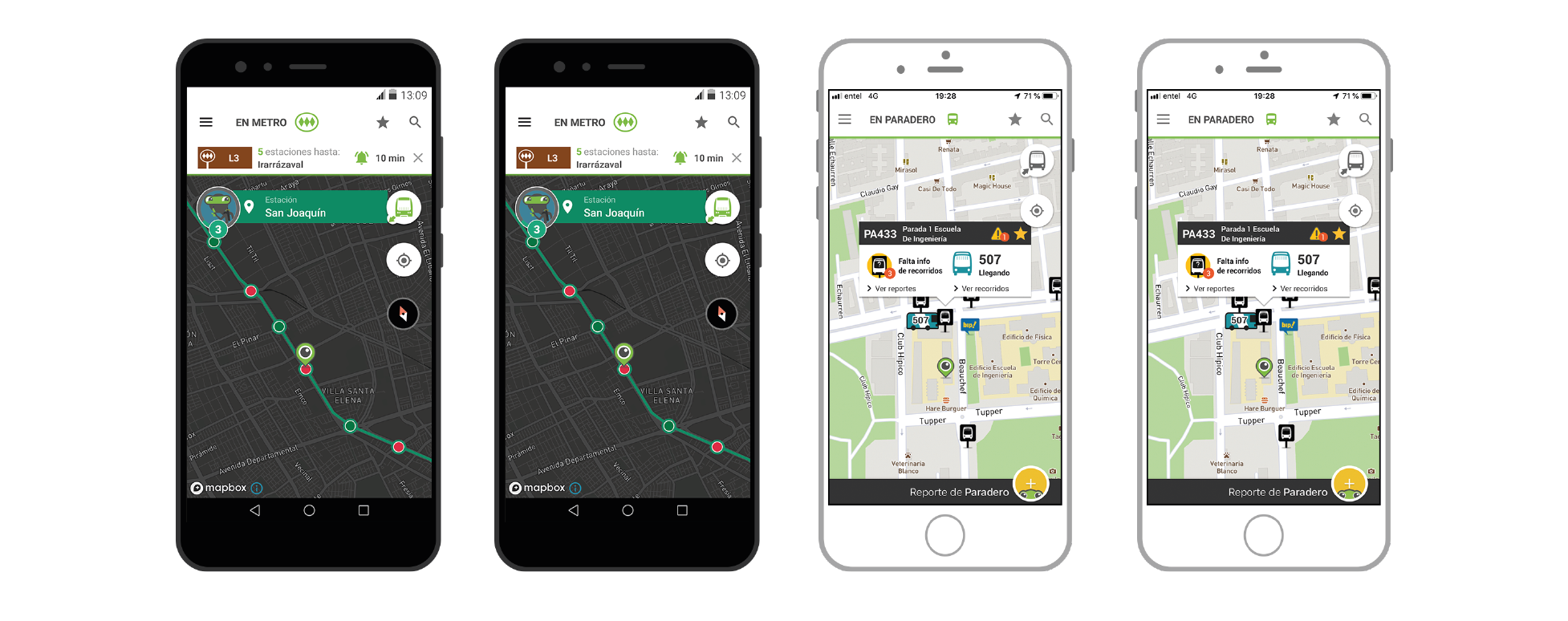
With the help of user feedback, it is possible to enhance the information available on the transport system, identifying problems and detecting opportunities to improve.
Six million transactions are made each day on the TranSantiago network. Year after year, the system is criticized for deficiencies in its operation and regulation, but It is not always easy to identify the origin of these problems. With that in mind, a team of PhD students and researchers from the Complex Engineering Systems Institute (ISCI) created TranSapp, a collaborative network in which users report their travel experience in real time, sharing valuable data for each actor within the system: passengers, operators, and regulators.
TranSapp is an application that first appeared 2016, supporting the first ever community of TranSantiago passengers. Available for Android and iOS, the application maps nearby stops and reports which buses are on their way to that point. Information is also available from the Metro network, letting people know, for example, in what station they are located, allowing them to receive alerts when approaching their destination, and planning their trip. Thanks to its development with cutting-edge technology, users can upload any relevant data about their experience, from the general condition of the bus stop, the attitude of the drivers and the quality of their driving, the level of crowding within the bus, the immediate surroundings, and also safety issues. When boarding a bus, it is possible to validate information detected by other passengers through TranSapp and add complementary data in real time. In addition, a user waiting at a bus stop can make decisions regarding their trip. For example, if a bus has no seats available, they can find out in many minutes the next one will come along and whether or not space is available on board.

Mauricio Zúñiga, Co-Founder of TranSapp, explains “Traditionally, people only report negligence or serious incidents within TranSantiago, since this involves a time-consuming and bureaucratic process on the website. A great deal of information regarding problems and factors that have a negative impact on the quality of service goes unreported. Thanks to TranSapp, which is based on a community of more than 50,000 users, it is possible to report and visualize the system’s shortcomings, very simply, and in real time.”
Operators can also add to information registered on the platform, informing their users online about detours, alerts, and contingencies, thus improving the perception of the quality of their services.
The application also benefits operators and regulators and gives them access to reliable data about its users such as fluctuations in passenger numbers, fare evasion, load profiles, and occupancy rates. At present, TranSapp delivers this information free of charge to whoever requires it.
It is through the multiple categories of available data that TranSapp reaches its maximum potential to make a positive impact on the improvement of the capital’s public transport, benefiting all of the actors of the system.
Comunicaciones ISCI

